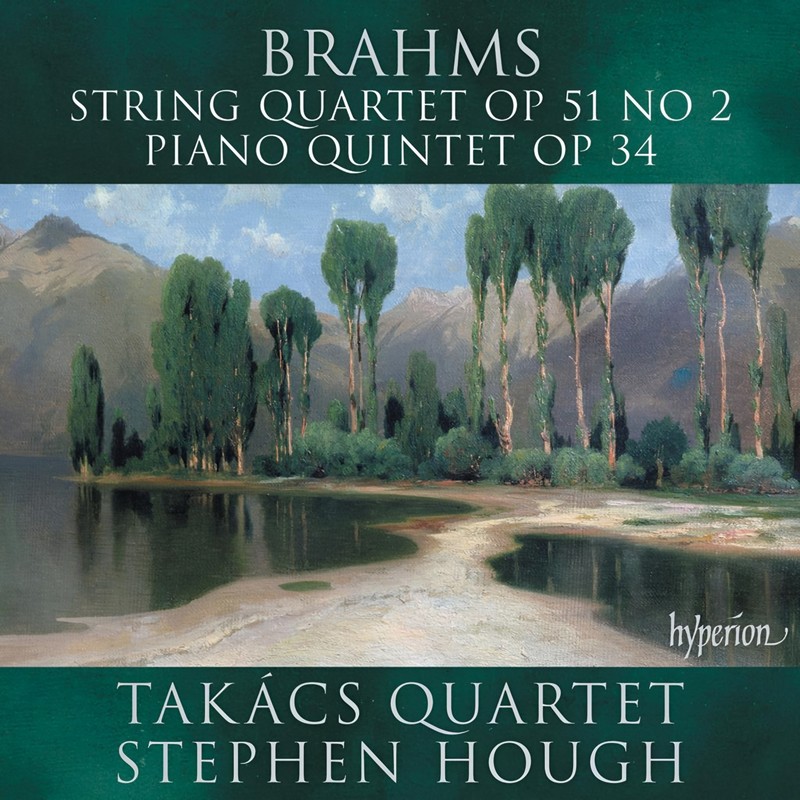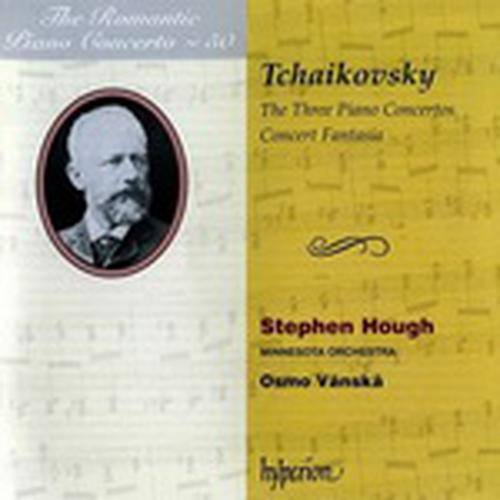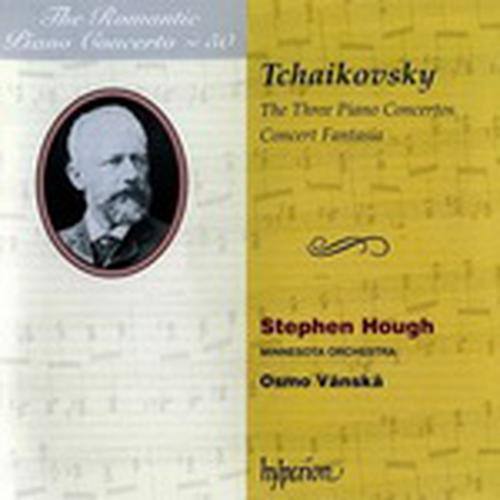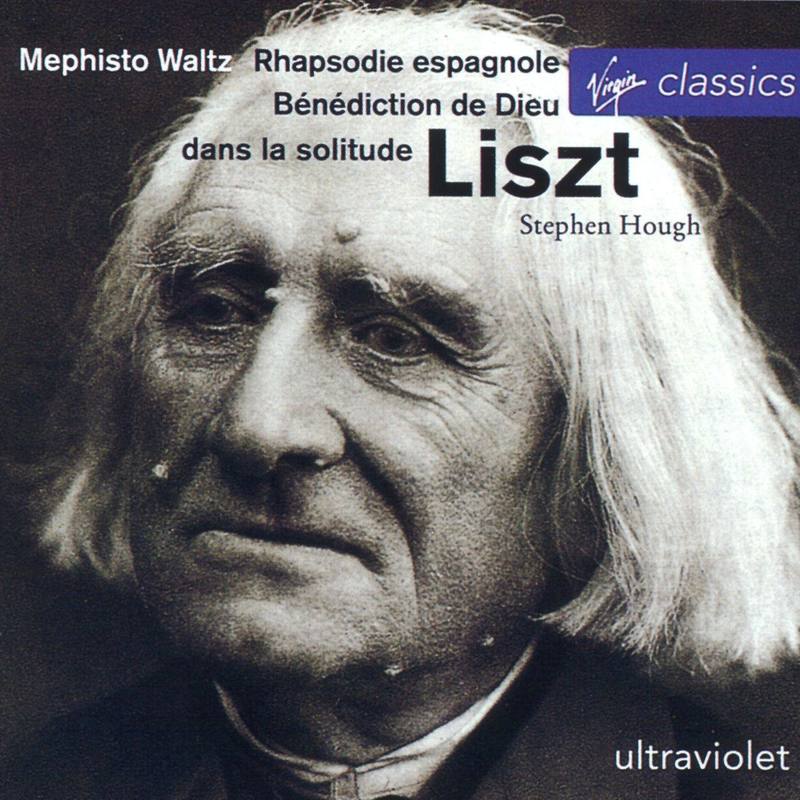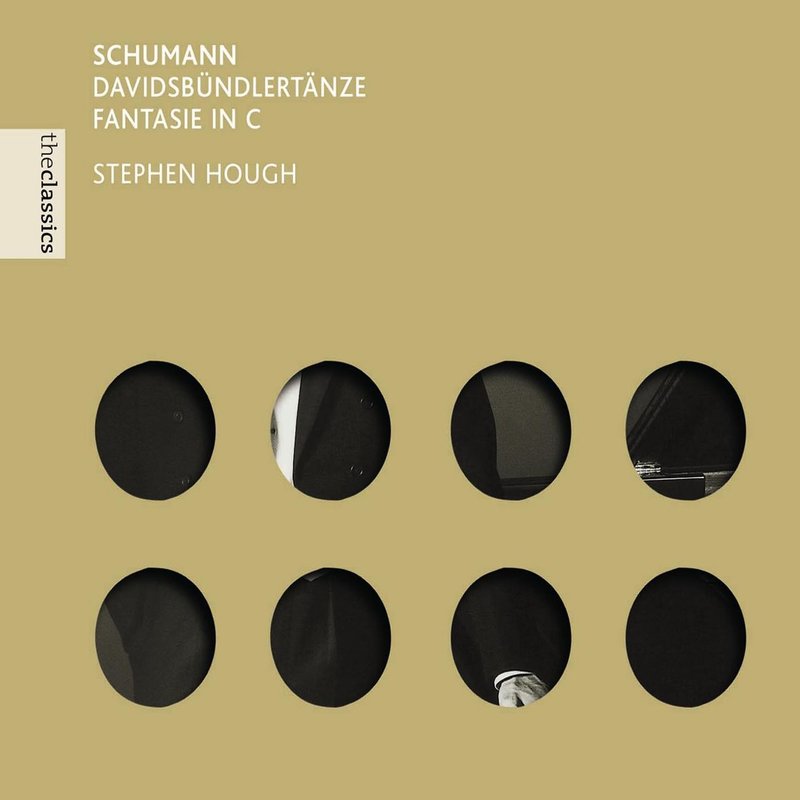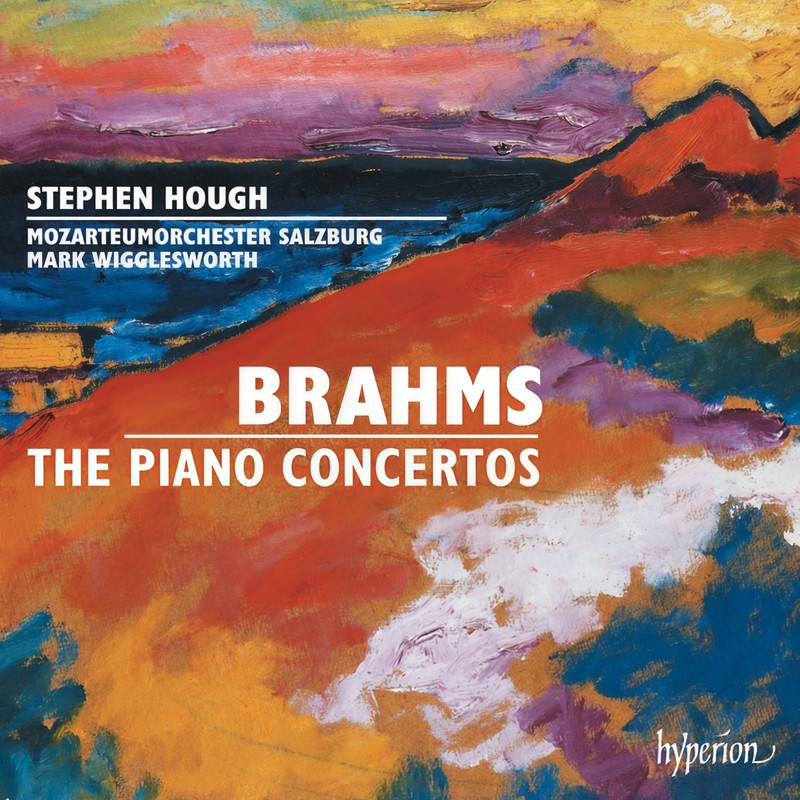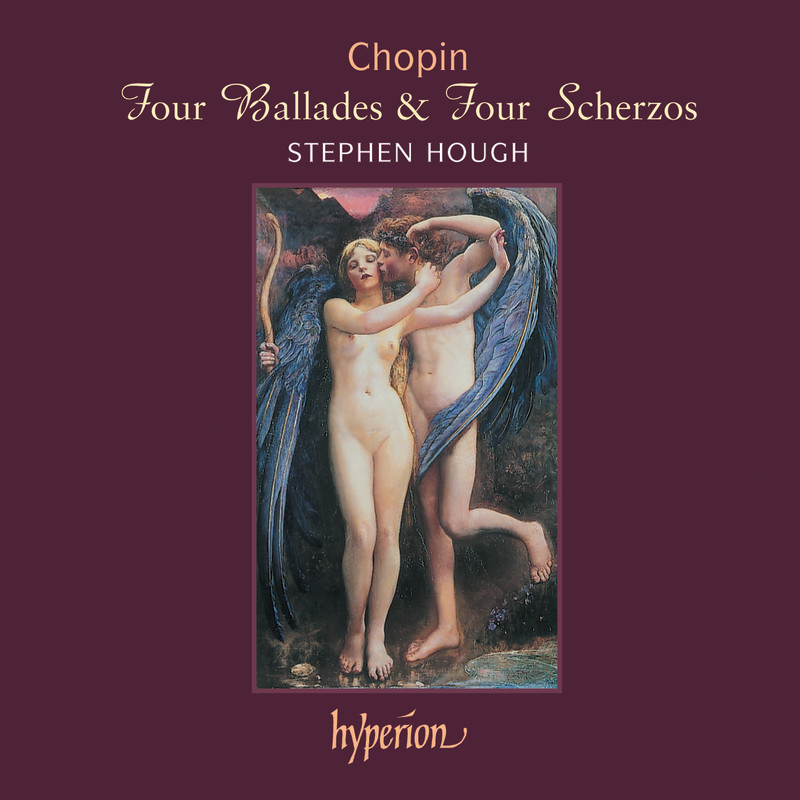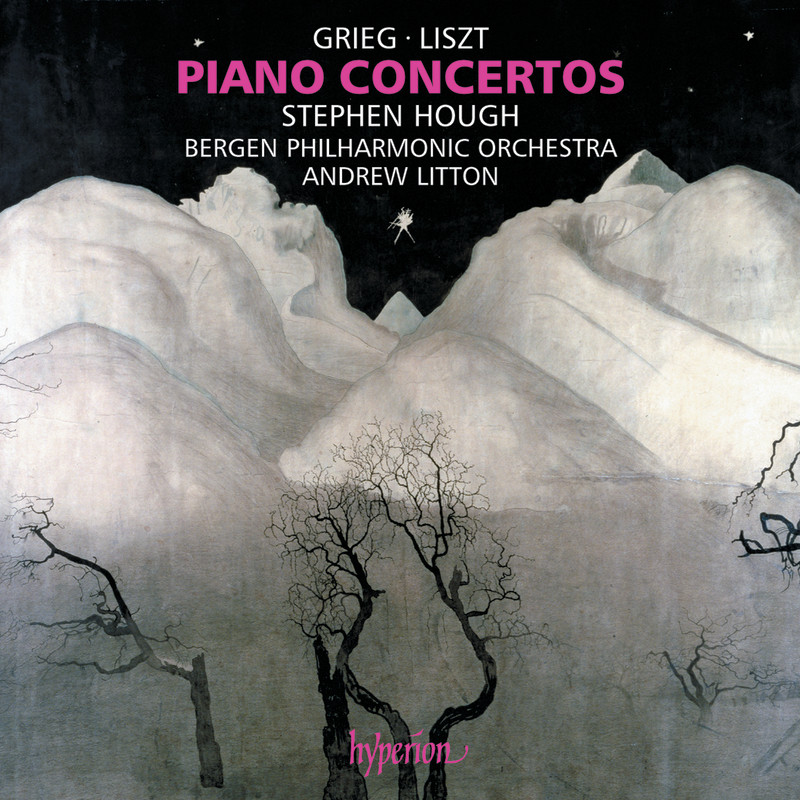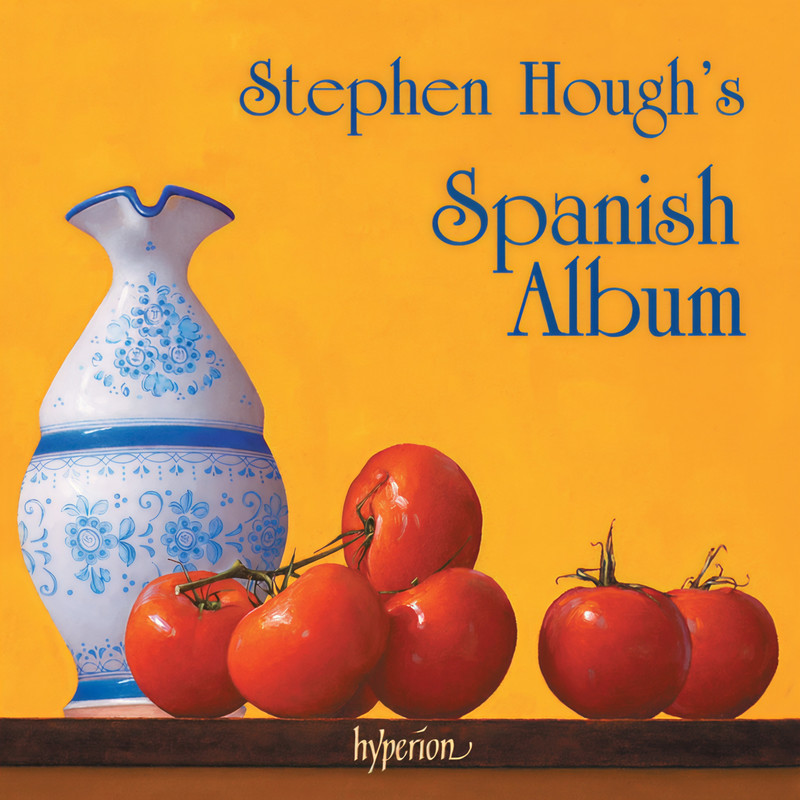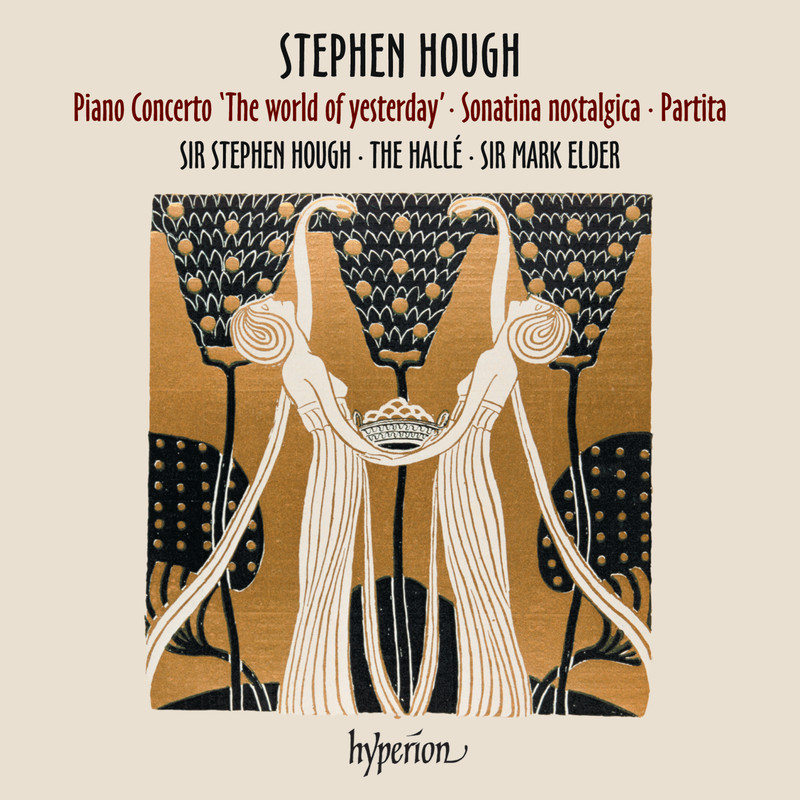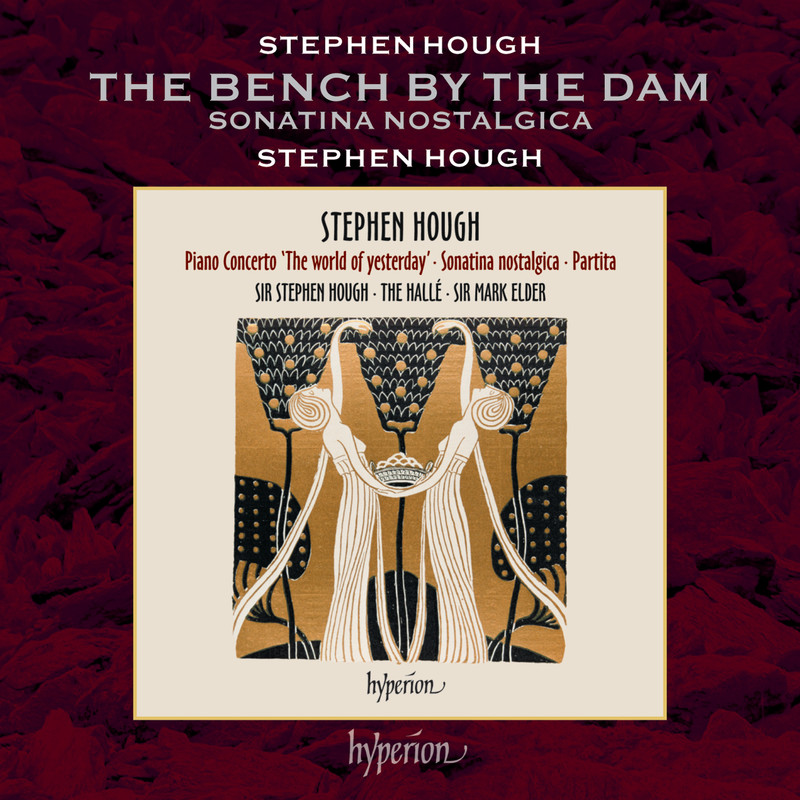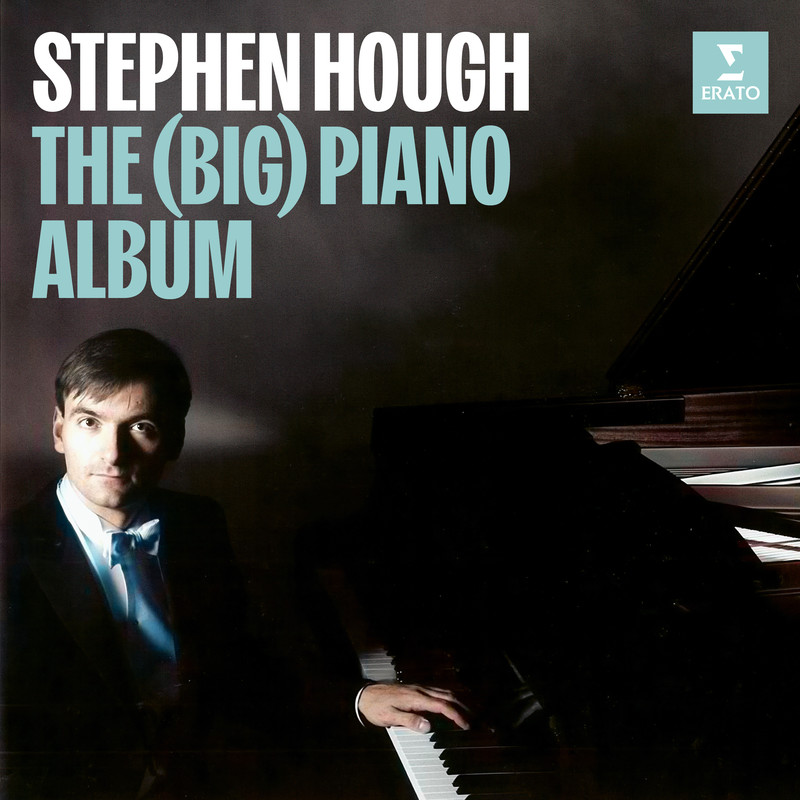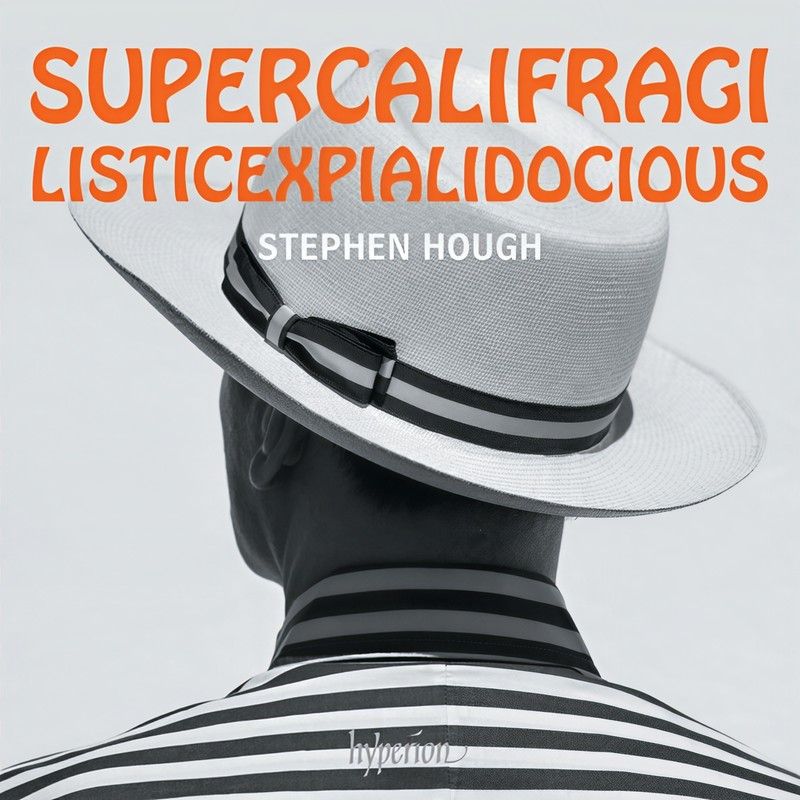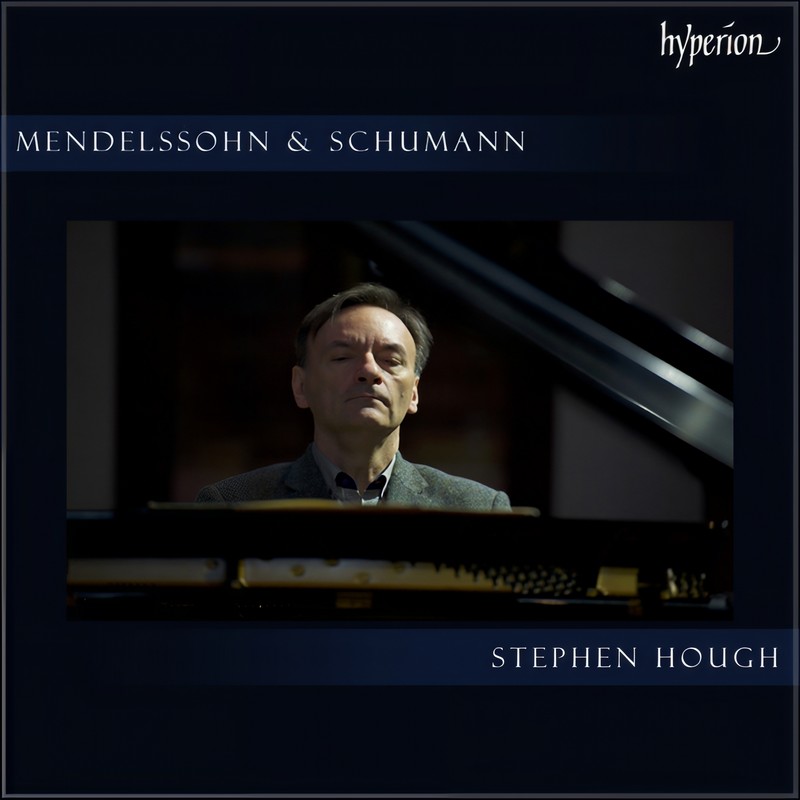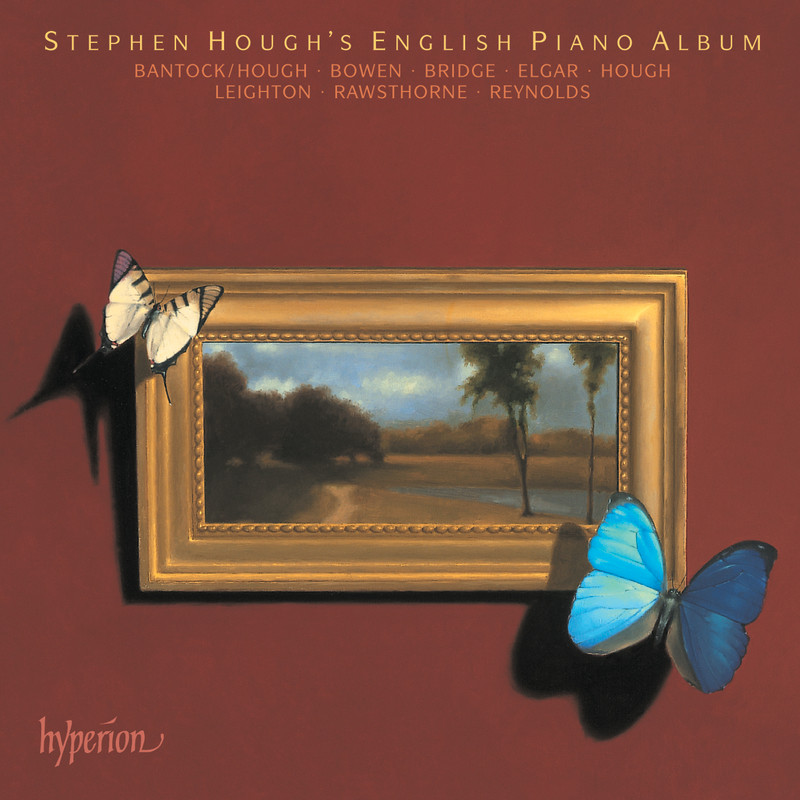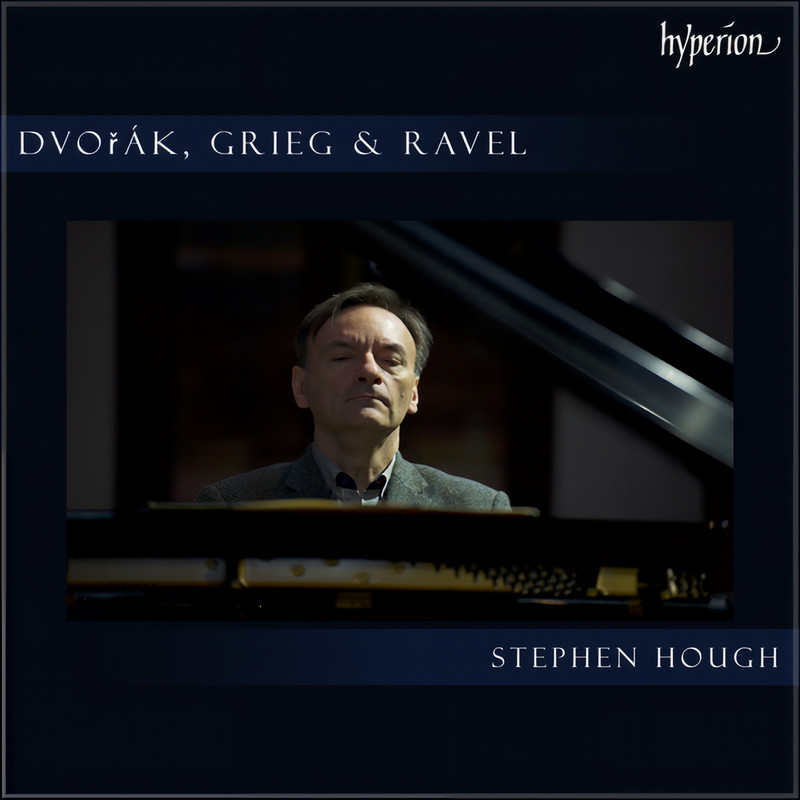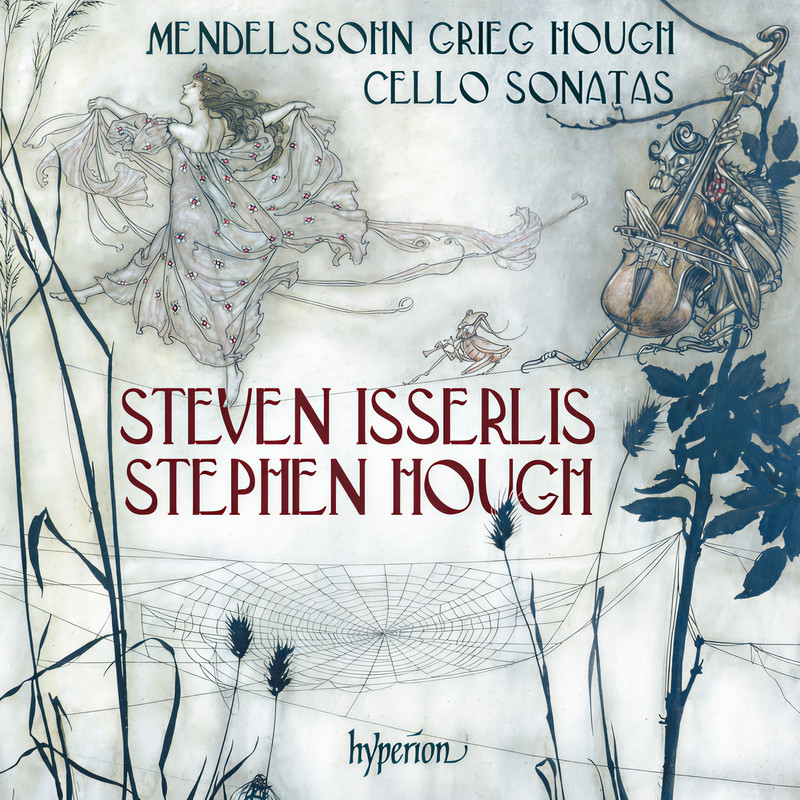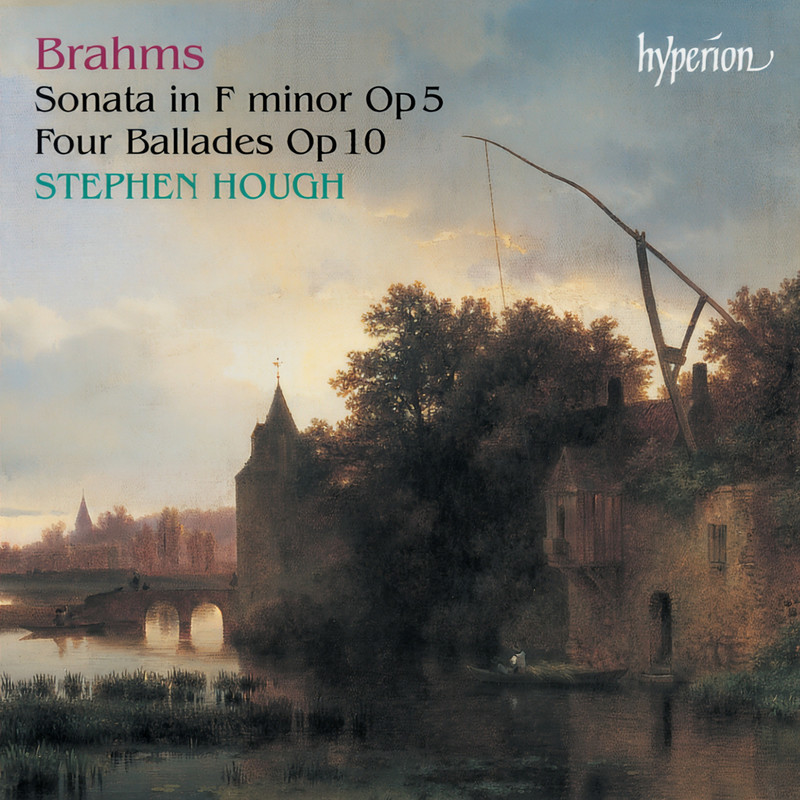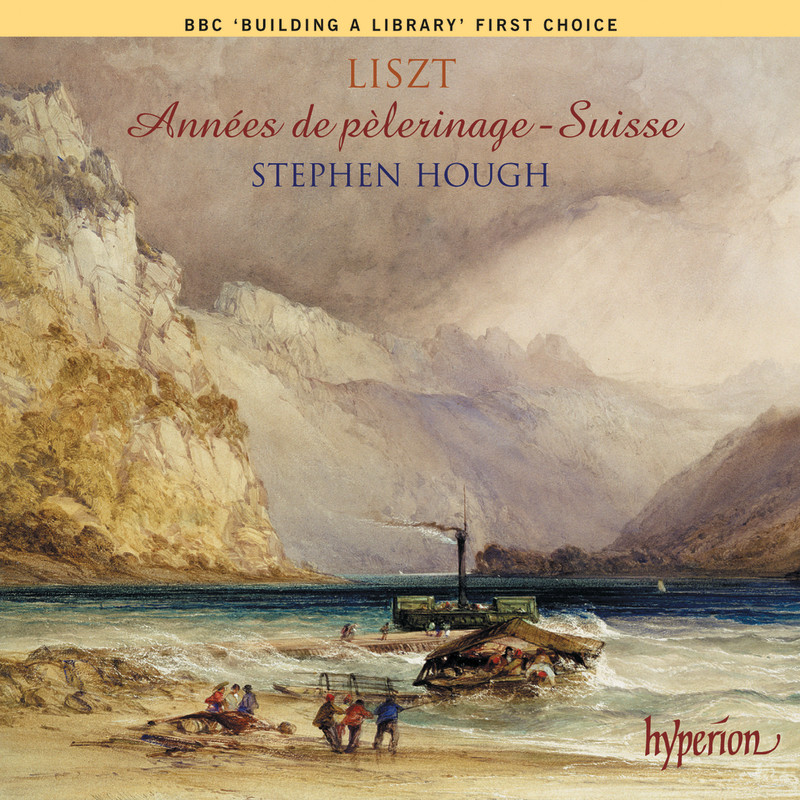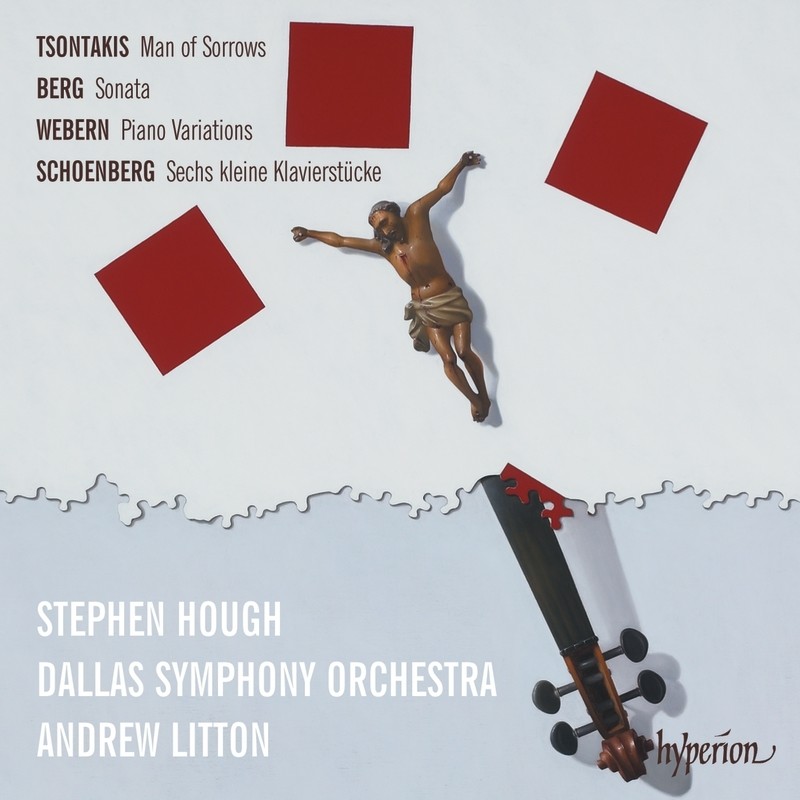
Chopin: Piano Sonata No. 3 in B Minor & Other Late Masterpieces
Stephen Hough
2010-04-01
专辑简介
Stephen Hough joins the celebrations for Chopin’s 200th birthday with a disc containing much of the composer’s most extraordinary music, written in the last years of his life where the expressive possibilites of his art were constantly unfolding as he imbued his favoured forms with previously unknown levels of complexity and emotional depth. This disc includes the intoxicatingly ornamented Berceuse Op 57 and the sublime Barcarolle in F sharp major as well as the Polonaise-Fantasy in A flat major and the towering Piano Sonata No 3 in B minor. Also included are two late Nocturnes which demonstrate how Chopin’s art had evolved since he first composed in that genre in his youth. The programme is completed by a selection of Mazurkas, each a tiny jewel, containing no less mastery than their larger counterparts, and providing moving sonic evidence of the contemplative profundity of Chopin’s late style.
Stephen Hough’s extraordinarily sensitive playing is informed by his limitless technique and engaging musical imagination. This is the Chopin of a true Romantic.
The concept of ‘late style’ embraces more than a simple fact about creative chronology. Consider the works that Beethoven, Verdi, Rembrandt, Monet, Shakespeare, and Henry James wrote in their last years. In these various late styles, vastly different in both medium and style from one another, we nonetheless sense certain common threads: an accumulated wisdom, a mastery of craft, and a profundity of expression mixed with some elements of resignation and fulfilment. (The literary and musical critic Edward Said has also drawn attention to those aspects of late style that emphasize qualities of opposition, intransigence, and unresolved contradiction.) Often these characteristics seem to devolve naturally from the contemplation of mortality, with accompanying senses of anxiety or tranquillity as the case might be.
That late style might be uncoupled from mere chronological age explains why we can fairly invoke the concept in reference to the music a composer wrote in his thirties. Frédéric Chopin composed all (or nearly all—there is some uncertainty about when he wrote the Mazurkas Op 67 No 4 and Op 68 No 4) of the music included on this recording between 1843 and 1847, or between the ages of 33 and 37. Although he was hardly old even by the standards of his day, Chopin’s personal situation, and especially the fragile status of his health, brought his pathologies into full view. Frail and pale, Chopin never enjoyed a strong constitution. But the physical and emotional crises he endured during his voyage to Majorca with George Sand in 1838–9 surely forced him to ponder his mortality, and just as surely caused his contemporaries to view him through the lenses of sickness and impending death—despite Chopin’s health more-or-less stabilizing through the rest of his relationship with George Sand, and indeed through their rupture in 1847.
Nevertheless, it would be rash to suppose that it was only Chopin’s consciousness of his mortality that led to the onset of his late style. Purely musical reasons—the desire to give a new impetus to his creativity—also impelled him toward stylistic change. Several facts support this hypothesis. His productivity dropped sharply after 1841, suggesting that he had to work harder and in different ways to bring works to fruition. His letters mention that he returned to the formal study of learned counterpoint around this time. He approached familiar stylistic features in new ways. Ornamentation appears more judiciously, to support particularly important moments in form. Rhythm takes on greater importance in the support of larger-scale expression. Strikingly, Chopin started to write in genres he had never before explored (Berceuse, Barcarolle, Polonaise-Fantasy). All of this points to a composer fundamentally rethinking the nature of his craft.
Chopin’s interest in the novel expressive possibilities of new genres in his late style first manifested itself in the Berceuse Op 57, composed in 1843. The idea of the work was so new that he initially did not know what to call it. His original title, ‘Variantes’, gives away the game: the entire piece, save for its coda, unfolds as a series of variants of a simple four-measure theme, with every measure set to the same, unyielding, gently rocking accompanimental pattern (the lullaby-like qualities of this last feature presumably suggested the ultimate French title of the piece). The variants themselves provide an encyclopaedic panorama of Chopin’s ornamental art, and, in their very extravagance, draw attention to the unusual status of the piece in Chopin’s late period. (Only one other work from Chopin’s later years, the Nocturne in B major, similarly features lavish ornaments.) In its fusion of mechanical repetition and profuse ornamentation, the Berceuse produces sensations of musical difference substantially distinct from what he cultivated in such genres as the mazurka. With respect to the automatic quality of the accompaniment, an acquaintance of Chopin described him (in 1846) imitating at the piano the sound of a music box, an account whose details echo intriguingly against the sound world of the Berceuse (and may actually describe it). Yet he plainly did not intend the piece simply to represent a machine, and it is precisely his sumptuous decorations that overcome the effect of the accompaniment. By combining rigid repetition and extravagant decoration, Chopin animated the pianistic machine to produce art.
When Chopin composed his final solo piano sonata, the B minor Op 58, in 1844, the genre was enjoying something of a mini-boom among pianist-composers active in Paris. Two famous sonatas in B minor formed the bookends of this revival (the other one by Liszt, penned a few years after Chopin died), which also included interesting contributions by the likes of Thalberg, Kalkbrenner, Heller and Alkan. In many of these sonatas, we detect a nascent historicism, a new respect for and engagement with the tradition of the genre established by the classical predecessors of these composers. On one level, Chopin’s B minor Sonata fits with this trend. Tradition manifests itself in many ways: in the four-movement design he followed in all his sonatas (opening allegro—scherzo or minuet—slow movement—concluding allegro), in his choice of forms for the individual movements (though Chopin’s interpretation of first-movement sonata form remained consistently idiosyncratic throughout his life), and in the dichotomy between energetic thematic work and expansive lyrical reflection. But against the backdrop of this tradition there emerges a powerful and movingly personal statement entirely in keeping with the tenets of the composer’s late style. In the play of imitation in the passage-work of the first movement we hear the fruit of Chopin’s study of learned counterpoint. In the restrained lyricism of the second theme of the first movement (the emotional crux of the movement) and in the touching third movement (with its quiet accompanimental march rhythms—an allusion, perhaps, to the funereal ‘Marche’ of his second sonata) we witness Chopin’s interest in a more strategic use of ornamentation to emphasize key points of structure. And in the brisk second and fourth movements we feel the new importance he accorded to rhythm as a means of heightening tension over longer durations.
The Barcarolle Op 60 (1846) shares a basic lyrical impulse with the genre of the nocturne, but there the similarities end. The different title not only bespeaks a particular geographical locale—the undulating accompaniment of the opening section evokes a Venetian gondolier’s oar sliding through the water—but also a more expansive expressive reach. Thus the three-part form (opening section—contrasting unit—reprise of opening), while bearing a superficial similarity to that found in many of Chopin’s nocturnes, unfolds with greater complexity. We sense this in the middle section, which first builds tension through repetitive accompanimental rhythms and rising dynamics, next dilates on a lyrical tune whose end keeps folding back into its beginning, and finally meanders slowly, and with exquisitely lyrical tenderness, toward the reprise. And what a reprise: not only is the gliding accompaniment of the opening transformed into massive octaves, but the lyrical tune from the middle section surprisingly reappears, now rendered as the climactic moment of the piece. Thus the reprise is no longer a gesture of simple return, but rather one of drawing together the disparate parts of the Barcarolle into a larger whole. Generic innovation called forth formal synthesis: both crucial aspects of the vocabulary of Chopin’s late style.
We have noted already that Chopin’s search for new modes of expression led him at times to struggle with titles. In a letter to his family from around Christmas 1845, he mentions similar difficulties with the piece he would eventually call Polonaise-Fantasy, Op 61: ‘Now I would like to finish … something else that I do not know how to name.’ His sketches for the work reveal that the characteristic rhythms of the polonaise emerged rather late in its compositional process (which could explain Chopin’s uncertainty over the title), and that he focused more on the moulding of the form of the fantasy. Certainly the fantasy element commands our attention in this piece, and right from the start: the sharply articulated chords interspersed with meandering, hazy arpeggios give the impression of a pianist improvising the opening to some kind of epic ballade. The similarity with the openings of some of Chopin’s own Ballades is noteworthy, and continues to play out elsewhere in the Polonaise-Fantasy, especially in the way that vital moments in its expressive trajectory hinge on thematic transformation (where later statements of themes take on substantially different characters than their initial presentations). Formally, while the piece preserves some elements of the ‘statement—departure—return’ idea familiar from Chopin’s earlier polonaises, the frequent digressions from this model stand more to the fore: in the many sudden shifts into sharply contrasting themes and keys, we perceive one more way in which Chopin successfully fused the genre of the fantasy with that of the polonaise.
In Chopin’s final two published Nocturnes, Op 62, completed in 1846, he returned to a genre that had occupied him since his youth. Indeed, the nocturne helped to define him musically during his life, so striking did his listeners find the innovations he brought to the genre that John Field earlier popularized. Above all, the appearance of a sharply contrasting, often agitated middle section served to identify what people thought of as the ‘Chopin nocturne’. Both the B major and E major Nocturnes suggest that Chopin, in his late style, tackled these identifying sections in full awareness of his earlier efforts. In some ways (and this is entirely in keeping with the idea of late style), it is as if he were haunted by his earlier efforts: the middle section of Op 62 No 1 struggles against its ‘agitated’ identity, trying to quell it but still leaving it subtly audible in the syncopated accompaniment; the middle section of Op 62 No 2 revisits learned counterpoint through three instances of canonic imitation, and so (the first of these canons beginning in the key of C sharp minor) alluding to his earlier Nocturne in C sharp minor, Op 27 No 1, the work in which Chopin introduced audible counterpoint into the genre. The outer sections of the two Op 62 Nocturnes provide the lyrical grace we expect from the genre, but with some surprises, especially in the first of them. Chopin wove intricate layers of counterpoint beneath the initial appearances of the lilting B major principal melody. But when the theme returns after the middle section, Chopin gave free rein to his decorative sensibility. The unbridled trills and extravagant melodic flourishes of this truncated reprise, as well as the mysteriously peculiar chromatic alterations that bedeck the coda, evoked for his contemporaries a kind of musical exoticism that inevitably was to be measured against Chopin’s Polish origins.
The national credentials of the mazurka were of course explicit. Yet the Polish element in this music may not be quite what it seems. In the Warsaw of Chopin’s youth, the mazurka enjoyed widespread popularity as a ballroom dance, and it clearly was this salon dance, and not some form of peasant music, that became the point of departure for Chopin’s efforts in the genre. What listeners have construed as evocations of an exotic folk essence—the stealthy harmonies, dissonant melodies, and rhythmic dislocation—more accurately reflect Chopin’s imagination, his invention of a sonic national image. This recording samples mazurkas drawn from his last published set (Op 63, dating from 1846–7) and from works published after he died (Op 67 No 4 derives from a completed manuscript that Chopin probably gave to an acquaintance in 1846; Op 68 No 4 was reconstructed from an unfinished sketch found among his effects after he died—there is some evidence to conclude that this mazurka was not Chopin’s ‘last work’, as commonly supposed, but rather a work that Chopin rejected from Op 63 and replaced with the other F minor Mazurka on this recording). Wonderful details animate each of these mazurkas: the initial melodic dissonance in the F minor Mazurka Op 63 No 2 that generates the mood and gestures of the rest of the piece; the astonishing outbreak of canonic imitation at the very end of the (otherwise) waltz-like C sharp minor Mazurka; the poignancy of the snaking chromatic melodic lines that precede the principal cadences of the A minor Mazurka; and in the posthumous F minor Mazurka, the chromatic sequences in the opening bars that sound almost unhinged from tonal moorings. These small gems, apparently simple in design, contain no less mastery than their larger counterparts, and provide moving sonic evidence of the contemplative profundity of Chopin’s late style.
Jeffrey Kallberg © 2010
专辑曲目
1
Barcarolle in F-Sharp Major, Op. 60
Stephen Hough
2
Mazurka No. 40 in F Minor, Op. 63 No. 2
Stephen Hough
3
Mazurka No. 45 in A Minor, Op. 67 No. 4
Stephen Hough
4
Mazurka No. 41 in C-Sharp Minor, Op. 63 No. 3
Stephen Hough
5
Mazurka No. 49 in F Minor, Op. 68 No. 4
Stephen Hough
6
Polonaise-Fantaisie in A-Flat Major, Op. 61
Stephen Hough
7
Nocturne No. 17 in B Major, Op. 62 No. 1. Andante
Stephen Hough
8
Nocturne No. 18 in E Major, Op. 62 No. 2
Stephen Hough
9
Chopin: Piano Sonata No. 3 in B Minor, Op. 58 - I. Allegro maestoso
Stephen Hough
10
Chopin: Piano Sonata No. 3 in B Minor, Op. 58 - II. Scherzo. Molto vivace
Stephen Hough
11
Chopin: Piano Sonata No. 3 in B Minor, Op. 58 - III. Largo
Stephen Hough
12
Chopin: Piano Sonata No. 3 in B Minor, Op. 58 - IV. Finale. Presto non tanto
Stephen Hough
13
